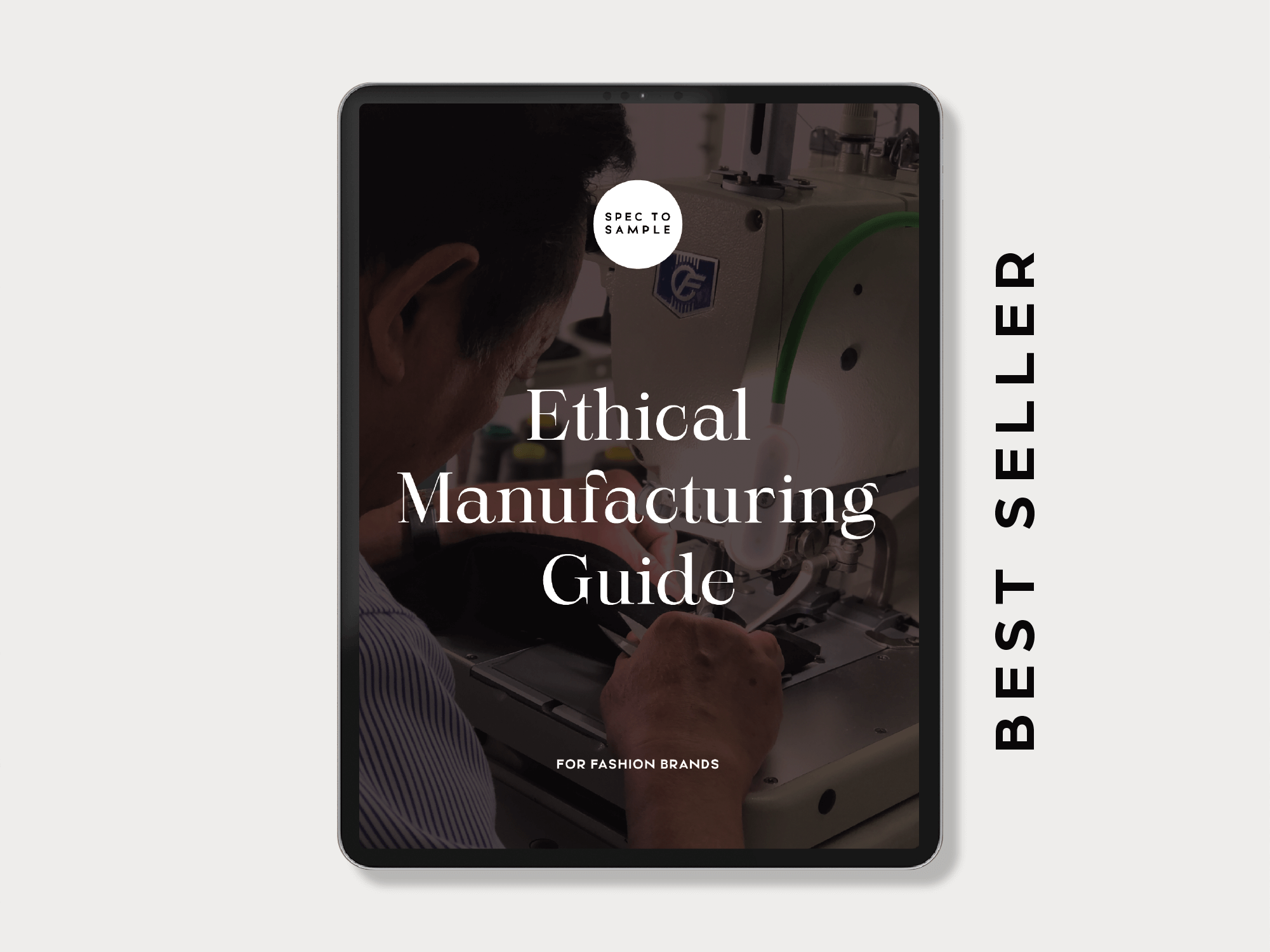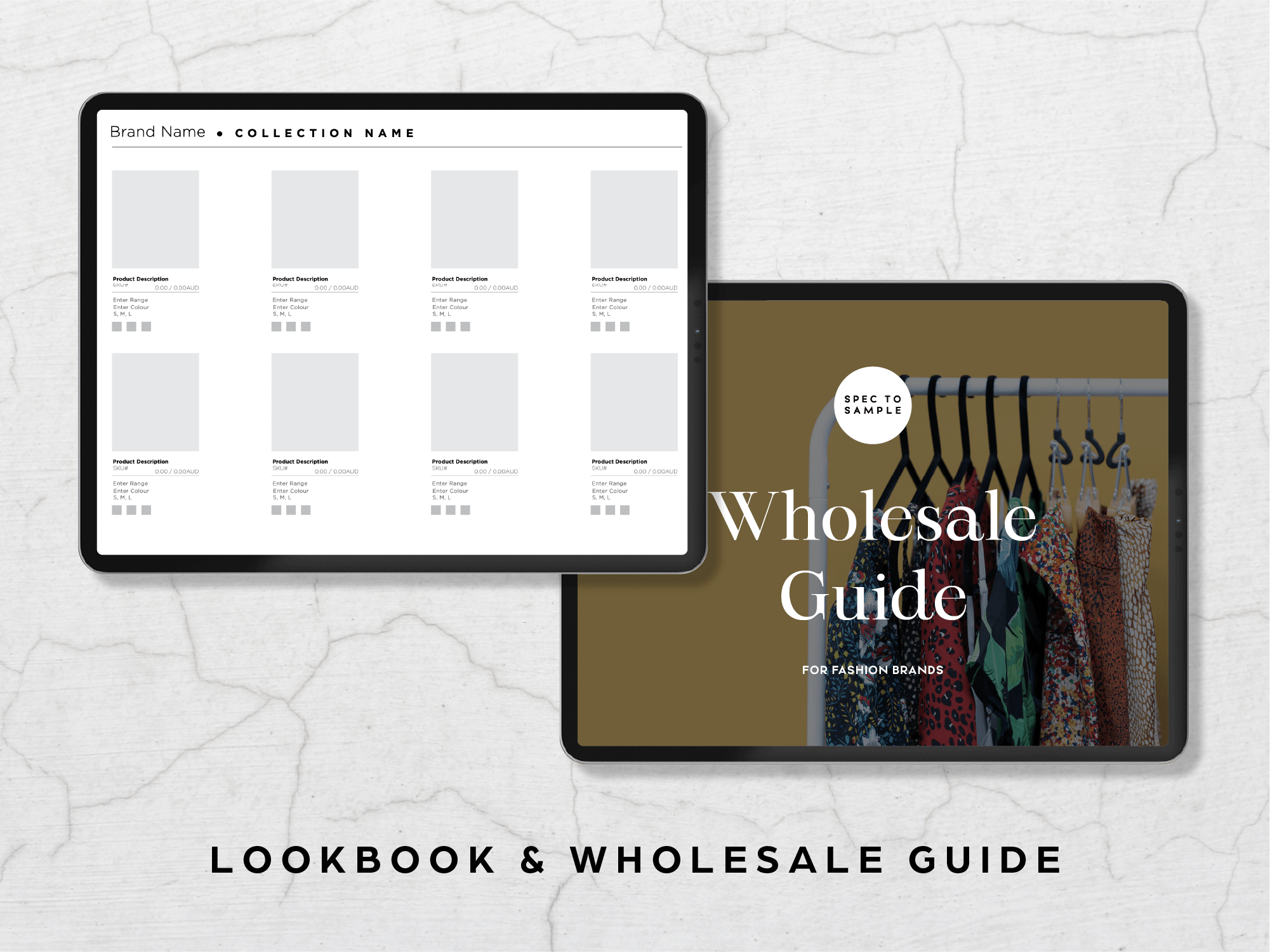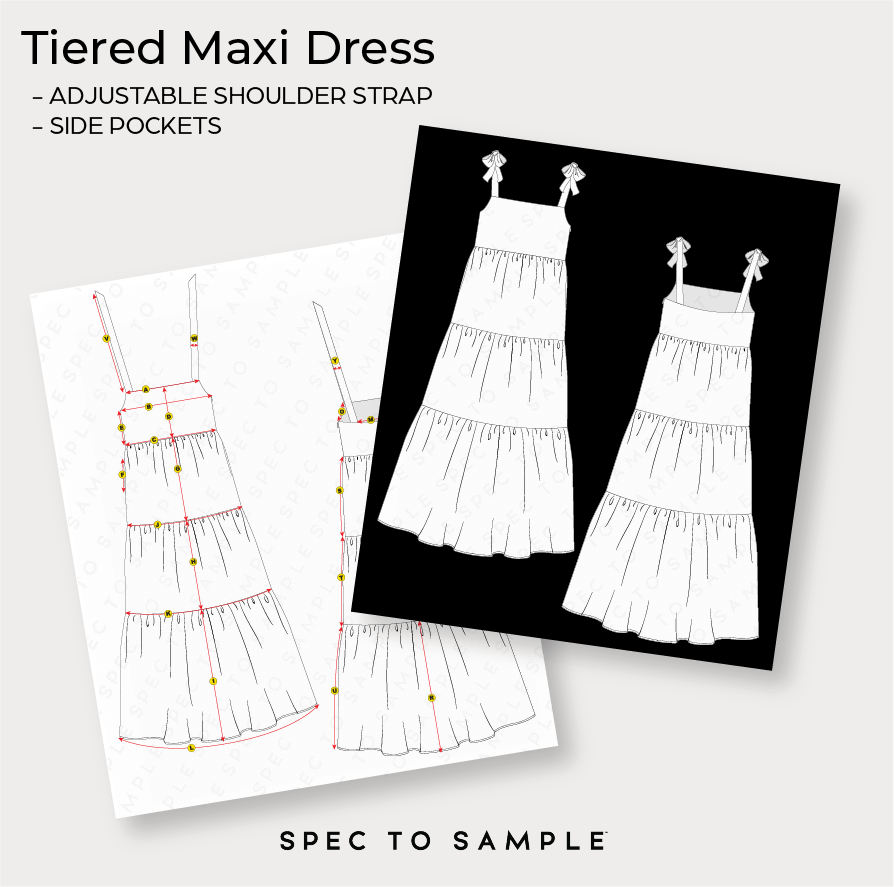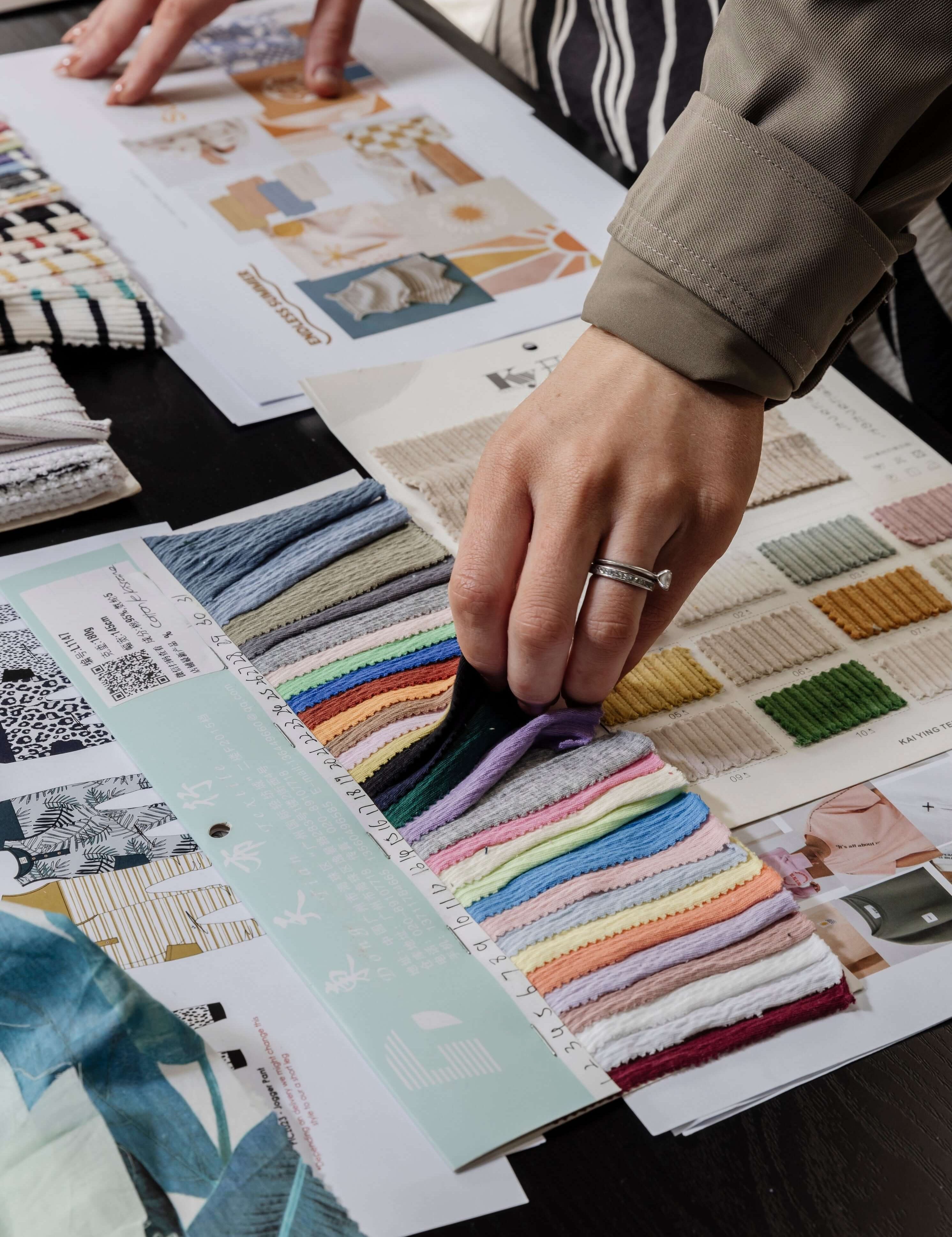How to Choose the Right Fabric for Your Fashion Brand
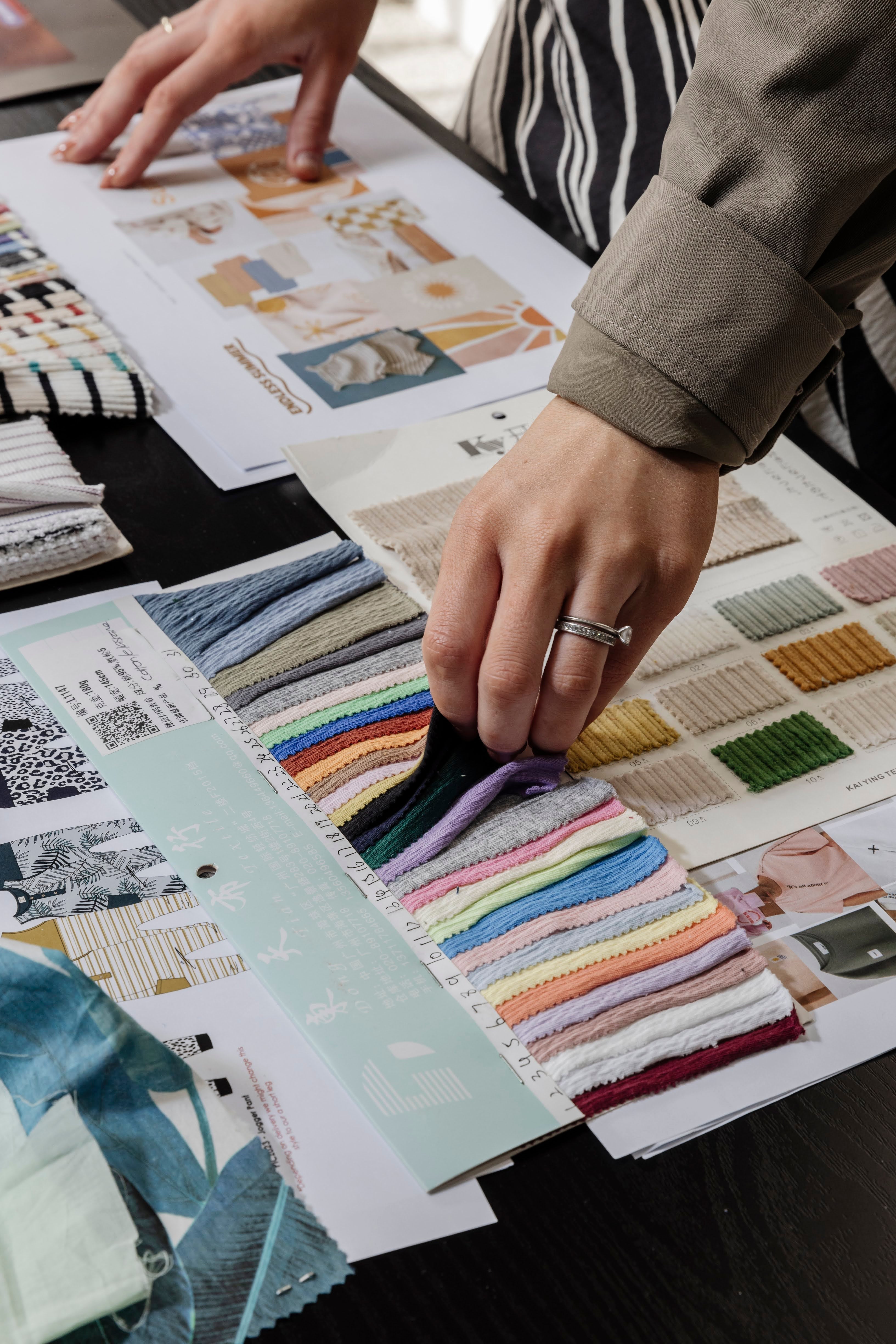

Fabric Selection
Let's explore two of the most common fabric choices, natural and synthetic. Cotton, a beloved natural fibre, is known for its breathability and comfort, making it ideal for everyday wear. However, cotton can wrinkle easily. On the other hand, wool, another natural material, provides warmth and structure. It is perfect for winter garments. However, wool requires special care. Synthetic fibres like polyester offer wrinkle resistance and durability. But these two may not be as breathable as natural options.
As designers, it is important for us to understand the characteristics of different fabrics. A flowy, summer dress wouldn't be complete without the airy drape of chiffon. A tailored blazer demands the structure and stability of a wool blend. But fabric selection goes beyond just technical specifications. It's about creating a cohesive whole. Imagine a flowing, romantic maxi dress crafted from heavy denim – the look wouldn't quite capture the essence of elegance, would it?
Your fabric choice should complement the overall design of the garment. For structured pieces like jackets or tailored pants, a fabric with a good body, like a twill or a heavier cotton sateen, would be ideal. Conversely, garments designed for a relaxed fit, such as t-shirts or beach cover-ups, would benefit from lighter fabrics like jersey knits or linen blends. This interplay between fabric and design creates a visually harmonious and aesthetically pleasing piece.
There's more to consider than just aesthetics, however. There’s also the seasonality of your clothing. Imagine cosy wool sweaters hitting store shelves in the heat of summer – not exactly a recipe for success. Consider the climate of your target market. Opt for lightweight, breathable fabrics like cotton or linen for spring and summer collections, while focusing on warmth and structure with wool or fleece blends for fall and winter.
Finally, your target market and their budget are key factors. Are you designing for activewear enthusiasts who prioritize comfort and stretch? Opt for fabrics like moisture-wicking synthetics or cotton blends. Are you targeting a luxury market? Explore high-quality natural fibres like silk or cashmere, keeping in mind the associated cost considerations. Understanding your target market allows you to make informed decisions about both the functionality and price point of your fabrics.
Understanding Fabric Properties
Now let’s look closer between natural and synthetic fibres. Each of these offers a unique set of characteristics that influence the look, feel, and performance of your garments.
Natural Fibres
These fibres come from plants, animals, or minerals and are generally considered more breathable and comfortable. Here's a closer look at some popular options:
Cotton: A universally beloved choice, cotton is known for its breathability, softness, and versatility. However, it can wrinkle easily and may require special care for certain blends.
Linen: This natural fibre boasts excellent breathability and a luxurious drape, making it ideal for summer apparel. However, linen wrinkles readily and requires specific laundering techniques.
Wool: Known for its warmth, insulation, and wrinkle resistance, wool is a perfect choice for winter garments. However, some people find wool itchy. It also requires special care.
Silk: Luxuriously soft and breathable, silk offers a beautiful drape and a touch of elegance to garments. However, silk is delicate and requires extra care.
Synthetic Fibres
These man-made fibres offer advantages like wrinkle resistance, durability, and affordability. However, these may not be as breathable or as comfortable as natural fibres. Here are some commonly used synthetics:
Polyester: A versatile and affordable option, polyester offers wrinkle resistance and durability. However, it can trap heat and may not be as breathable as natural fibres.
Nylon: Known for its strength and elasticity, nylon is ideal for activewear and sportswear. However, similar to polyester, it can trap heat and may not be as breathable.
Acrylic: A soft and affordable alternative to wool, acrylic offers warmth and wrinkle resistance. However, it can be prone to static cling and may not be as breathable as natural fibres.
Fabric Blends
The world of fabrics extends far beyond natural and synthetic fibres. Fabric blends combine different fibre types to offer a broader range of properties and functionalities. For example, a cotton-polyester blend provides the breathability of cotton and the wrinkle resistance of polyester. Additionally, various treatments can be applied to fabrics to enhance their performance. For example, water-repellent finishes are perfect for outerwear like jackets.

Matching Fabric to Your Design Vision
Now that you have a better understanding of fabric properties, let's explore how to translate your design vision into reality. The fabric you choose should be functional and complement the overall aesthetic of your garment. Here are some key considerations:
- Drape: Refers to how the fabric falls and flows on the body. A lightweight chiffon would drape beautifully for a flowy dress, while a heavier wool blend would provide structure for a tailored jacket.
- Weight: Fabric weight is measured in grams per square meter (GSM) and impacts the overall feel of the garment. Lightweight fabrics like voile are ideal for summer clothing, while heavier fabrics like denim provide structure and warmth.
- Texture: The texture of the fabric refers to its surface feel, from the smooth softness of silk to the rough texture of linen. Consider how the texture complements the design; a smooth satin would elevate a formal dress, while a textured knit would add visual interest to a casual sweater.
Testing Fabrics
Before committing to large quantities, you should test your chosen fabrics. This involves washing the fabric to check for shrinkage, assessing its drape and movement, and ensuring it meets your quality standards. Testing can help you avoid costly production mistakes down the line. Here are some additional tips for testing fabrics:
- Order Swatches: Most fabric suppliers offer swatch programs, allowing you to purchase small samples of different fabrics. This is a cost-effective way to test various options before committing to larger quantities.
- Wash and Dry the Fabric: Wash the fabric according to the care instructions to check for shrinkage or colorfastness issues.
- Evaluate Drape and Movement: Drape the fabric on a dress form or mannequin to assess how it flows and moves. Consider how it will behave in a finished garment.
- Sew a Sample Garment: For a more comprehensive evaluation, sew a simple sample garment using your chosen fabric. This allows you to test the sewing properties of the fabric and how it behaves in a constructed piece.
Choosing the right fabric can be quite complicated right? That’s why you as a designer should be more conscious of what you wear and see how every piece adds up. It’s not rocket science but it’s also not a walk in the park. This blog post is just a primer on fabric choice because we might need to write a book to fully explain the nuances (maybe we should!). We hope this primer enlightens you a bit and also inspires you to appreciate the art and science behind fashion brands.
Selecting the right fabrics is an intricate process that requires knowledge, experience, and an understanding of current trends. While this blog post equips you with basic information, navigating the vast world of fabrics can be somewhat overwhelming. This is where Spec to Sample comes in. Our team of fashion experts boasts extensive experience in fabric sourcing and selection. We can help you:
- Identify the perfect fabrics for your design vision and target market.
- Source high-quality fabrics from reputable suppliers at competitive prices.
- Navigate the complexities of fabric testing and production.
- Stay informed about the latest sustainable and ethical fabric options.
By partnering with Spec to Sample, you gain access to our expertise and resources, allowing you to focus on what you do best – creating exceptional fashion designs. With our support, you can confidently select fabrics that elevate your brand and contribute to your success in the fashion industry.
Ready to take your fashion brand to the next level? Contact Spec to Sample today for a free consultation and let us guide you on your fabric selection journey!

